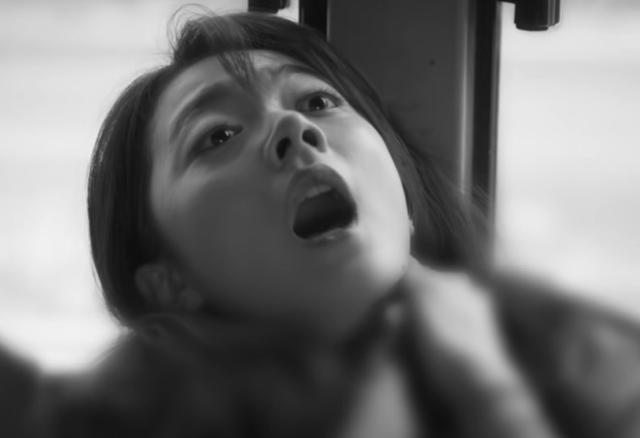小男孩被蜥蜴咬(赏析被蜥蜴咬的男孩)

Reaching for the succulent cherries in front of him, a handsome youth is surprised by a lizard that darts out from the shadows and bites him. In shock, he snatches back his hand, emitting a small cry of pain and astonishment. The sudden movement makes his shirt slip, sensuously revealing his right shoulder—a detail that Caravaggio deliberately highlights. Full of physical charms, desire, and sensations ranging from astonishment to pain, this pictorial narrative appears like a kaleidoscope of states of excitation embodied simultaneously by the protagonist.
一个英俊的年轻男子伸手去拿面前多汁的樱桃,蜥蜴从阴影中飞出并咬了他,吓了他一跳。他震惊地缩回了手,因痛苦和惊讶而小声叫了出来。突然的动作使他的衬衫滑了下来,性感地露出了右肩—卡拉瓦乔故意突出了这个细节。这种图形化的叙事充满了动作的魅力,渴望与欲望,描述了惊讶与痛苦的交织,就像主角同时表现出万花筒般的兴奋状态。
The fascination of this painting thus lies less in the wealth of symbolic or allegorical interpretations that can be applied to it than in the tremendously eccentric depiction of the interplay among physical sensibility, passionate agitation, and impulsive movement.
因此,这幅画的迷人之处不在于画中适用的大量象征或寓言性解释,而在于异乎寻常地描述了物理感官,热情激动和冲动的动作之间的相互作用。
Caravaggio’s boy comes right up close to the spectator, using this immediacy to make a theatrical display of the feigned horror expressed through his face and body: his right arm and hunched shoulder are intended to emphasize the physical sensation of the shock, while tension is conveyed in the marked splaying of the fingers.
卡拉瓦乔画中的男孩,利用这种即时性,戏剧性地展示了脸部和身体所伪装的恐怖,马上就靠近了观众:他的右臂和耸肩旨在强调身体感受的震惊,而明显张开的手指则传达了紧张感。
The movement as a whole is emphasized with exaggerated folds of the shirt; even the boy’s brow is creased with deep furrows. In a more mannered fashion, the left arm raised in a gesture of defense embodies horror as the motive force for body and soul, culminating in a hand that is so animated that it seems to have assumed a life of its own. The boy stares out directly, as if shocked more by the viewer than by the diminutive reptile.
衬衫夸张的褶皱强调了整体的运动。甚至男孩额头也深深地紧皱。左臂则更做作地以防御姿态举起,带动了身体和灵魂,进一步表现了惊恐。这只手如此生动,似乎已经拥有了自己的生命,画作在这里画上句号。这个男孩直接凝视着观众,仿佛让他更惊讶的是观众而不是小型爬行动物。
The painting is a provocation, and the existence of many different versions of the subject it inspired attests that the pictorial concept was successful for this very reason.
这幅画是一种刺激,它激发大家针对这主题创作了许多不同版本,这证明了该绘画概念正是因为这个原因而成功。
Artist Introduction画家简介

Michelangelo Merisi (Michael Angelo Merigi or Amerighi) da Caravaggio was an Italian painter active in Rome, Naples, Malta, and Sicily between 1592 (1595?) and 1610. His paintings, which combine a realistic observation of the human state, both physical and emotional, with a dramatic use of lighting, had a formative influence on Baroque painting.
米开朗基罗·梅里西(又称迈克尔·安吉洛·梅里吉或安梅里吉)卡拉瓦乔是一位意大利画家,在1592年(又或者1595年)到1610年,活跃于罗马的那不勒斯,马耳他和西西里岛。他的画作结合了对人类身体和情感双重状态的真实观察,以及戏剧性地使用灯光,对巴洛克绘画产生了形成性的影响。
Caravaggio trained as a painter in Milan under Simone Peterzano who had himself trained under Titian. In his twenties Caravaggio moved to Rome where there was a demand for paintings to fill the many huge new churches and palazzos being built at the time. It was also a period when the Church was searching for a stylistic alternative to Mannerism in religious art that was tasked to counter the threat of Protestantism. Caravaggio's innovation was a radical naturalism that combined close physical observation with a dramatic, even theatrical, use of chiaroscuro which came to be known as tenebrism (the shift from light to dark with little intermediate value).
卡拉瓦乔在西蒙娜·彼得扎诺的带领下在米兰学习绘画,而西蒙·彼得扎诺则是在提香的带领下学习。卡拉瓦乔在20多岁时移居罗马,因为当时罗马建造了许多新教堂和宫殿,绘画需求量很大。也是在这个时期,教会在宗教艺术中寻找替代矫饰主义的风格,以应对新教的威胁。卡拉瓦乔的创新是一种激进的自然主义,将近距离的身体观察与戏剧性甚至夸张的明暗对比结合起来,这种明暗对比逐渐被称为暗色调主义(从明到暗的转变几乎没有中间值)。
He burst upon the Rome art scene in 1600 with the success of his first public commissions, the Martyrdom of Saint Matthew and Calling of Saint Matthew. Thereafter he never lacked commissions or patrons, yet he handled his success poorly. He was jailed on several occasions, vandalized his own apartment, and ultimately had a death sentence pronounced against him by the Pope after killing a young man, possibly unintentionally, on May 29, 1606.
1600年,随着他第一批公众委托的画作《圣马太殉道》和《圣马太福音》获得了成功,他在罗马艺术界中声名鹊起。此后,他从不缺少委托工作或赞助人,但他没有很好地珍惜自己的成功。他多次被判入狱,故意破坏自己的公寓,最终在1606年5月29日,他杀害了一名年轻人(可能无意为之),最终被教皇宣布死刑。
An early published notice on him, dating from 1604 and describing his lifestyle three years previously, recounts that "after a fortnight's work he will swagger about for a month or two with a sword at his side and a servant following him, from one ball-court to the next, ever ready to engage in a fight or an argument, so that it is most awkward to get along with him."
一份早在1604年就发表的关于他的公告,描述了他三年前的生活方式,描写道:“在工作了两周后,他会在一个或两个月的时间里,带着剑,身边还跟着一个仆人,从一个球场到另一个球场,到处招摇过市,随时准备打斗或争吵,所以跟他相处最尴尬。”
In 1606 he killed a young man in a brawl and fled from Rome with a price on his head. He was involved in a brawl in Malta in 1608, and another in Naples in 1609, possibly a deliberate attempt on his life by unidentified enemies. This encounter left him severely injured. A year later, at the age of 38, he died under mysterious circumstances in Porto Ercole in Tuscany, reportedly from a fever while on his way to Rome to receive a pardon.
1606年,他在一场斗殴中杀死了一个年轻人,并以高昂的代价逃离了罗马。1608年在马耳他,他又参加斗殴。1609年在那不勒斯又发生了一场斗殴,可能是身份不明的敌人蓄意谋杀他。这次遭遇使他受了重伤。一年后,享年38岁的他在托斯卡纳的波尔图埃尔科莱,神秘死亡。据报死亡原因是在去罗马接受赦免的途中发烧。
Famous while he lived, Caravaggio was forgotten almost immediately after his death, and it was only in the 20th century that his importance to the development of Western art was rediscovered. Despite this, his influence on the new Baroque style that eventually emerged from the ruins of Mannerism was profound.
卡拉瓦乔在世时享誉世界,他死后几乎立刻就被遗忘了,直到20世纪人们才重新发现了他对西方艺术发展的重要性。尽管如此,新巴洛克风格最终能在矫饰主义的废墟上出现与发展,离不开他深远的影响。
It can be seen directly or indirectly in the work of Rubens, Jusepe de Ribera, Bernini, and Rembrandt, and artists in the following generation heavily under his influence were called the "Caravaggisti" or "Caravagesques", as well as tenebrists or tenebrosi ("shadowists"). The 20th-century art historian André Berne-Joffroy claimed: "What begins in the work of Caravaggio is, quite simply, modern painting."
可以直接或间接地看到,鲁本斯,朱塞佩·德·里贝拉,贝尼尼和伦勃朗以及后代画家的作品都深受所谓卡拉瓦乔式或者卡拉瓦乔风格(也称tenebrists或tenebrosi, “影子主义者”)的影响。20世纪的艺术史学家安德烈·伯恩·乔弗罗伊宣称:“卡拉瓦乔作品引领的是什么,很简单,就是现代绘画。”
Vocabulary单词解析succulent
英 [ˈsʌkjələnt] 美 [ˈsʌkjələnt]
adj.
汁多味美的;肉质的;多汁的
n.
肉质植物
lizard
英 [ˈlɪzəd] 美 [ˈlɪzərd]
n.
蜥蜴
kaleidoscope
英 [kəˈlaɪdəskəʊp] 美 [kəˈlaɪdəskoʊp]
n.
万花筒;(形势、图案等的)千变万化,瞬息万变
allegorical
英 [ˌæləˈɡɒrɪkl] 美 [ˌæləˈɡɔːrɪkl]
adj.
寓言的;讽喻的
interplay
英 [ˈɪntəpleɪ] 美 [ˈɪntərpleɪ]
n.
相互影响(或作用)
furrow
英 [ˈfʌrəʊ] 美 [ˈfɜːroʊ]
n.
犁沟;沟;车辙;(脸上的)皱纹
v.
犁;(使)皱(眉),蹙(额)
culminate
英 [ˈkʌlmɪneɪt] 美 [ˈkʌlmɪneɪt]
v.
(以某种结果)告终;(在某一点)结束
provocation
英 [ˌprɒvəˈkeɪʃn] 美 [ˌprɑːvəˈkeɪʃn]
n.
挑衅;刺激;激怒
如果大家感兴趣,请跟我联络~
,免责声明:本文仅代表文章作者的个人观点,与本站无关。其原创性、真实性以及文中陈述文字和内容未经本站证实,对本文以及其中全部或者部分内容文字的真实性、完整性和原创性本站不作任何保证或承诺,请读者仅作参考,并自行核实相关内容。文章投诉邮箱:anhduc.ph@yahoo.com






